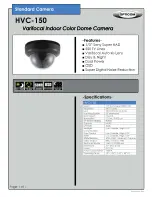
Chapter 2
Leica R-Lenses
12
At aperture 2.8 the performance is uniformly high: high con-
trast and clarity of details are even better than what you expect
from medium format systems and this verdict indicates the pre-
ferred domain of the 100mm. On tripod and with carefully
selected emulsions, the R-System reaches distinctive studio
quality. The MTF graphs indicate the performance potential.
The 5,10 and 20 Lp/mm are at all apertures equally high. At 5.6
you note the unavoidable effect of diffraction. Only the best
lenses can 'suffer' from diffraction at this aperture. The 40
Lp/mm, responsible for the reproduction of the fine details and
the crispness of the subject outlines, show an interesting shape
of the curve. At apertures of 5.6 and 8 the shape bulges out a
bit. This is the result of some focus shift. When you stop down a
lens, the rays at the edges are blocked and the plane of best
focus shifts a little bit. Often this shift will be compensated
with a correction state that plays out third and fifth degree
spherical aberration. But then contrast drops a bit too at full
aperture.
The Apo-Macro-Elmarit-R has hardly any spherical aberration
and already a high contrast at full aperture. Then you will see a
slight focus shift more easily. You should also look at the
design with the two thick single lenses at the rear. The front
group (six elements) moves in relation to the rear group (two
elements). Tis is not the same mechanism as with zoomlenses,
but a kind of internal focus mechanism. This is also responsible
for a slight reduction of focal length at the 1:1 macro position:
the focal length is here 92mm. You will hardly notice it.
The Apo-Macro-Elmarit-R is one of the very few lenses that per-
forms at its best already at full aperture and does not improve
on stopping down.
0
5
10
15
20
Y'[mm]
0
20
40
60
80
100
[%]
Aperture Stop 2.8
0
5
10
15
20
Y'[mm]
0
20
40
60
80
100
Aperture Stop 8.0
[%]
0
5
10
15
20
Y'[mm]
0
20
40
60
80
100
[%]
Aperture Stop 5.6

































